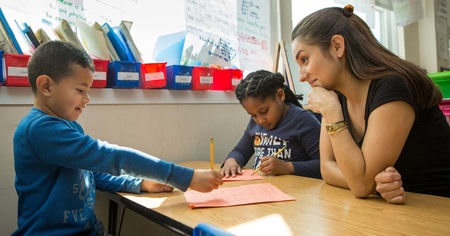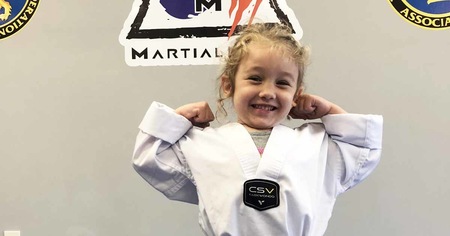These generations are often characterized by commonalities among their members regarding how they were raised, which trends they created, how they act as adults and how they raise their children.
As a millennial, I'm characterized as being entitled, not knowing what hard work looks like, seeming too casual or relaxed, needing a constant pat on the back, or being unable to complete a task without someone "holding my hand." However, all generations are labeled as having specific traits that stereotype their age group. Although there may be some truth to these generalities, it doesn't seem accurate to judge anyone based on their generational grouping.
Each generation brings experiences, values, challenges and strengths to our programs each day. It's up to us as leaders to break down the generational stereotypes and appreciate the contributions of our team members. In that way, we can meet each other where we are as people and learn to grow together.
The connection for a team member starts with a bond to their leader and the program. Following are some suggestions to build connections within your multigenerational teams. It's as easy as, "See them. Hear them. Include them."
SEE THEM.
The more you can connect with your team, the easier it will be to guide, teach and understand. Learn their story! Find out who they are, what brought them to you and why they are working for you. This can be achieved through one-on-one meetings, staff reflection interviews, icebreaker games, "about me" surveys or simple conversations.
Regardless of which generation our team members represent, they want to feel valued for the work they do. Build connections with your staff by highlighting accomplishments, passing along compliments and saying "thank you" for work they are doing. Always connect them back to the impact they are having on the program and the students they work with.
HEAR THEM.
Take a moment to set aside your thoughts and listen to the ideas of your team. Listen to understand, not just to hear. Change your, "Yes, but ..." response to a, "Yes, and ..." Hear their thoughts, check for understanding, ask questions and include them in the problem-solving process. Take the ideas back to the program and try to implement. Not every idea will be a success or be used, but the idea will be heard, and the connection will be established.
INCLUDE THEM.
Inclusion starts with the big picture. If you're the leader, your job is to lay the foundation then take a step back and let the team create the masterpiece with their inspirations, experiences, and ideas.
All team members need to feel "bought into" the program. Present them with a problem and purpose and have them brainstorm suggestions for solving, before sharing your ideas. Let staff create tools and strategies for program improvement or have them lead their peers in trainings. When a team member feels included, they are more likely to enjoy, participate and take ownership in what is being created.
As a leader, how will you break down generational stereotypes and begin to see each team member as the person they are, the experiences they bring, and the strengths that they have?
To connect across your multigenerational team, meet each team member where they are. Take time to build the relationship, hear the ideas and learn together. It all starts with a connection to you and their work.
Written by Tyler Kearns, a Play Ambassador through the partnership of the National Afterschool Association and The Genius of Play. Tyler is also Program Coordinator for Clayton Kid Zone, a martial arts school owner and instructor, and a parent, where he enjoys putting play theory into practice every day.




